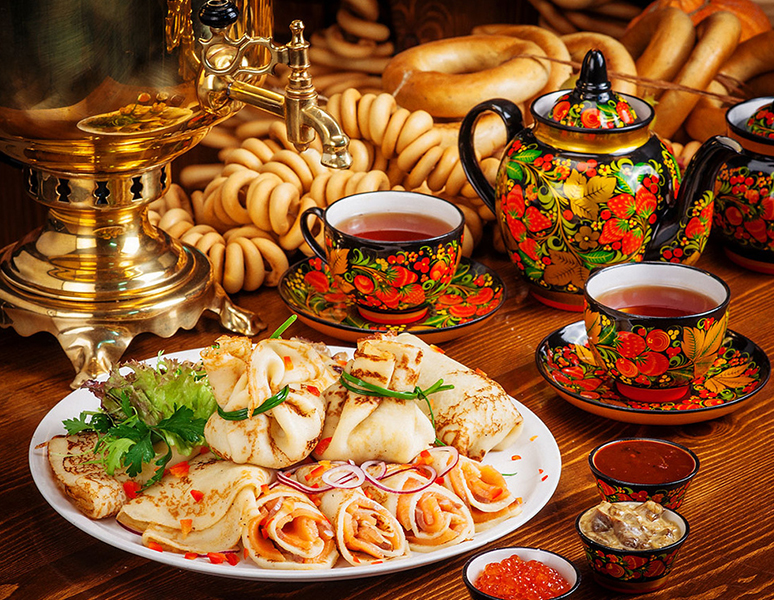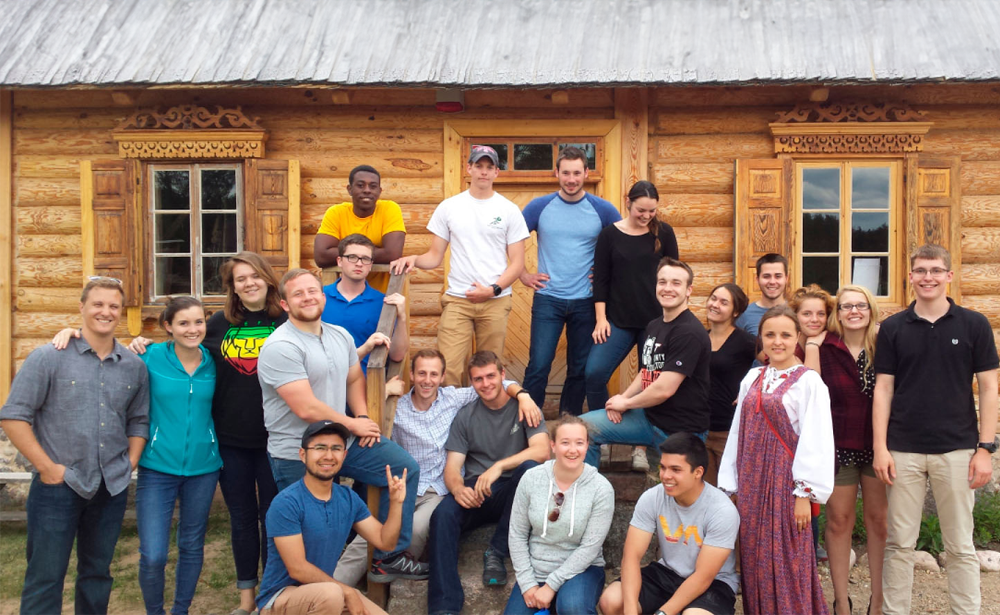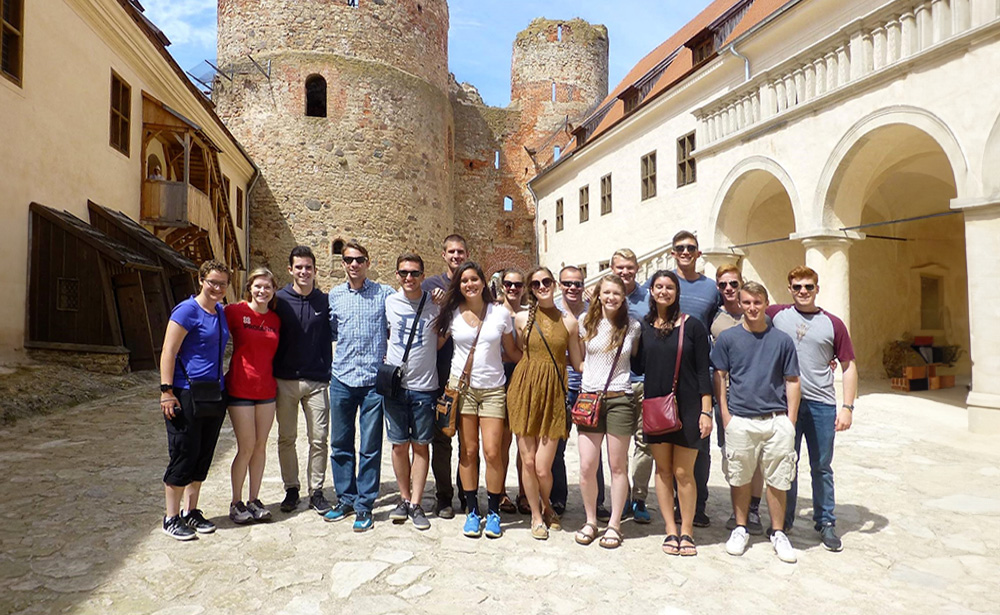Russian National Cuisine
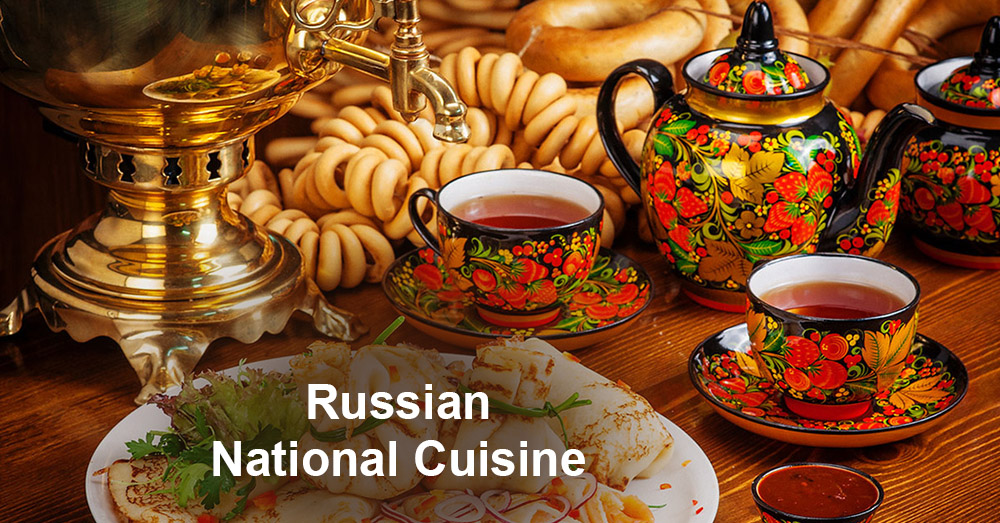
Russia is a multiethnic country, therefore, here you can taste different and exotic dishes of various ethnic groups living in Russia. However, you can find traditional Russian cuisine wherever you go and in any corner of the country. Here are 10 dishes of Russian national cuisine.
Shchi
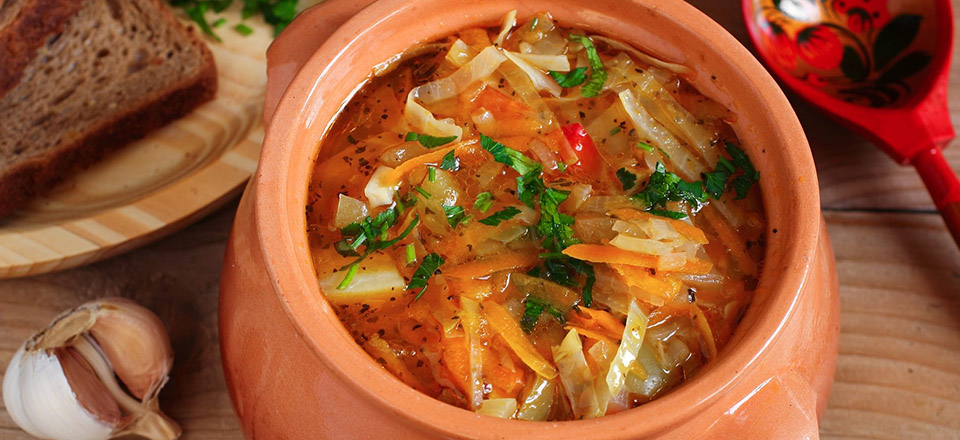
Shchi is a traditional Russian soup with sauerkraut which dates back to the 11th century. Its ingredients usually include meat, sauerkraut, cabbage pickle, and seasonings. Shchi could also be cooked with mushrooms. Majority of Russians make this soup following their own recipes and preferences. Shchi is eaten with rye bread and sour cream.
Pelmeni
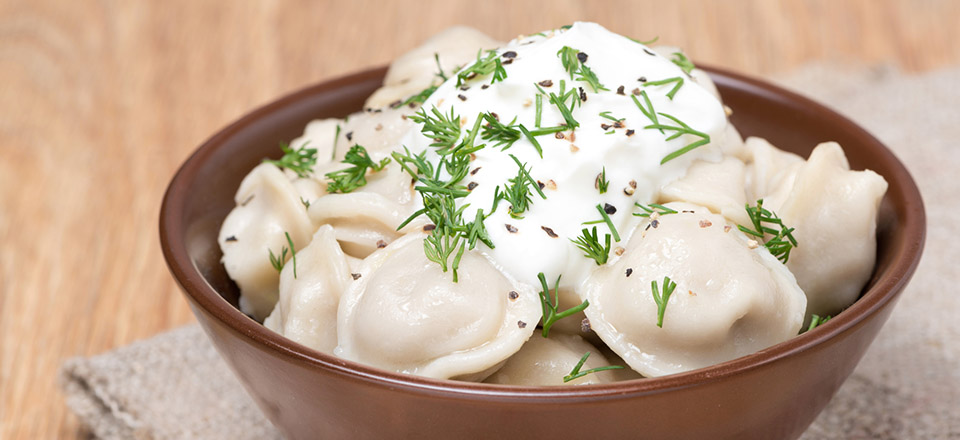
Pelmeni have been the most popular dish in Russia since the 14th century. The name “pelmeni” originates from the word in the Finno-Ugric languages which means “bread ear”. Classic pelmeni consist of minced pork, beef, lamb, or chicken which is wrapped into unfermented dough made from flour, eggs, and water. Traditionally, pelmeni are cooked in boiling salted water, and are served with sour cream or mayonnaise.
Porridge
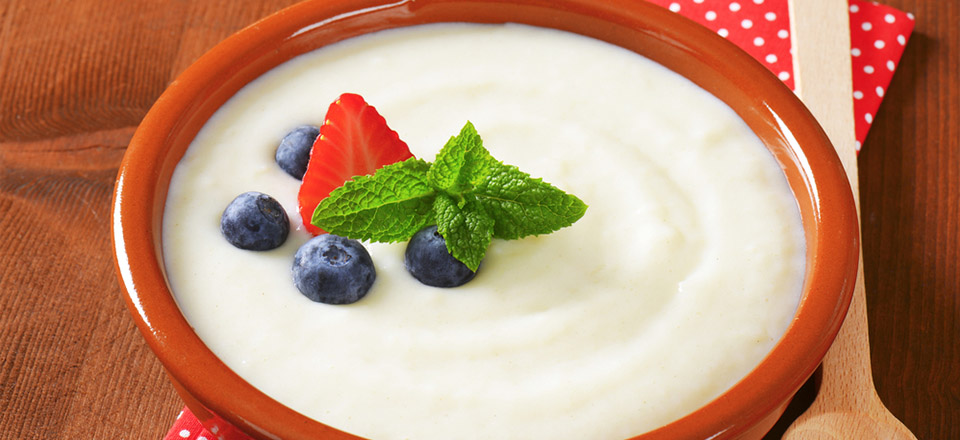
Porridges, as well as soups are an integral part of Russian cuisine. Every Russian person, especially in their childhood, had porridge, as it is an excellent source of energy, and it is also extremely healthy. Nowadays there is a large number of variety of porridge – semolina, pea, buckwheat, oatmeal. Porridge is cooked with milk or water, and it is served hot with butter. That’s how the expression “porridge cannot be spoiled with butter” appeared. It means that it can do you no harm, even when served in large quantities.
Russian pies
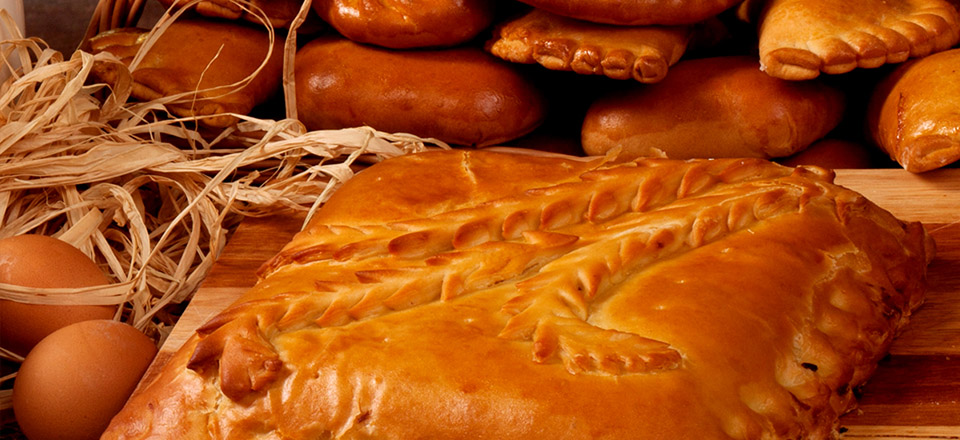
Russian people have the attitude towards pies similar to Italians’ attitude to pizza. Russian pies are mainly made of savory dough with various fillings – meat, fish, vegetables, or fruit. There is also a wide variety of this dish, for example, cheesecake, coulibiac, small pies, kurniks.
Pancakes
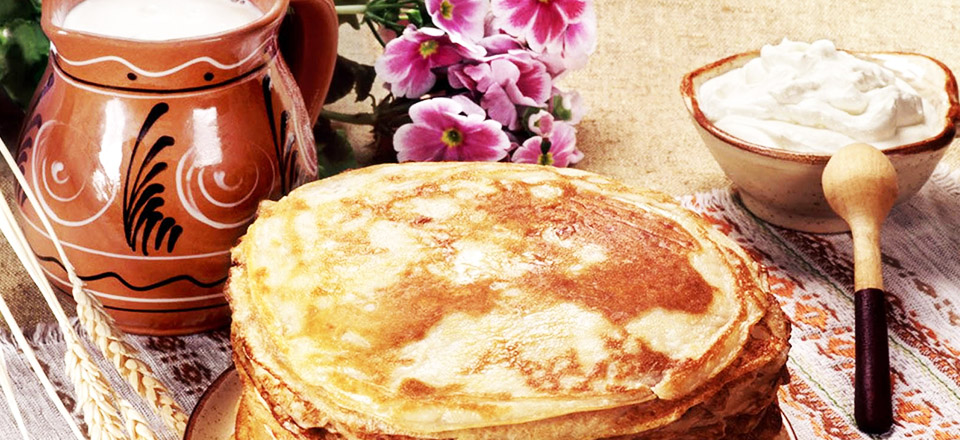
Pancakes is the oldest dish of Russian cuisine. The recipe of the simplest version of pancakes includes three ingredients: milk, eggs, and salt. However, the cooking process requires skills that not every housewife possesses. When the liquid dough is poured into a hot frying pan, the task of the cook is to bake a flat pancake and not let it burn. Pancakes are usually served with sour cream, butter, honey or jelly. Other fillings – meat, vegetables, sweet, fruit, etc. could be wrapped in pancakes.
Olivier
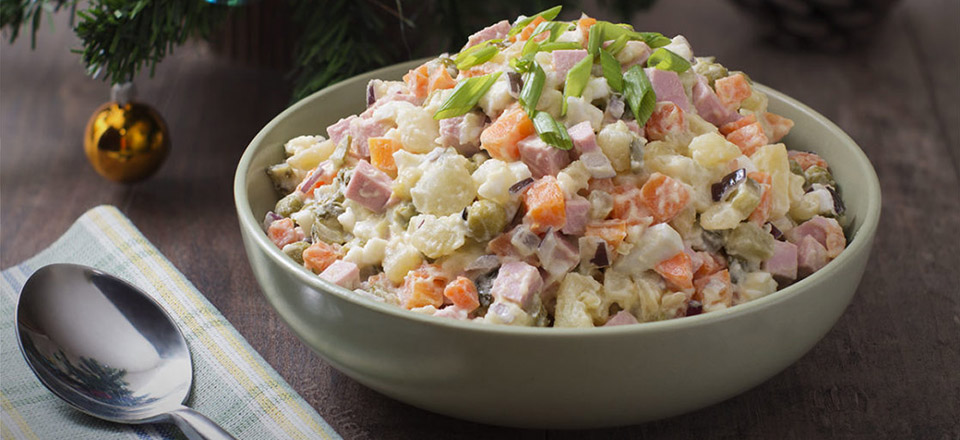
Just as Americans find it difficult to imagine the Thanksgiving Day without turkey, so Russians cannot imagine their New Year’s table without Olivier. The salad got its name after its creator who worked in Moscow in the 19th century. He was the French chef Lucien Olivier. The salad became extremely popular because it is easy to cook. Classical “Olivier” includes boiled potatoes and carrots, sausage, hard boiled eggs, pickled cucumbers, green peas, and dill. All ingredients are cut into small cubes and dressed with mayonnaise.
Vinaigrette
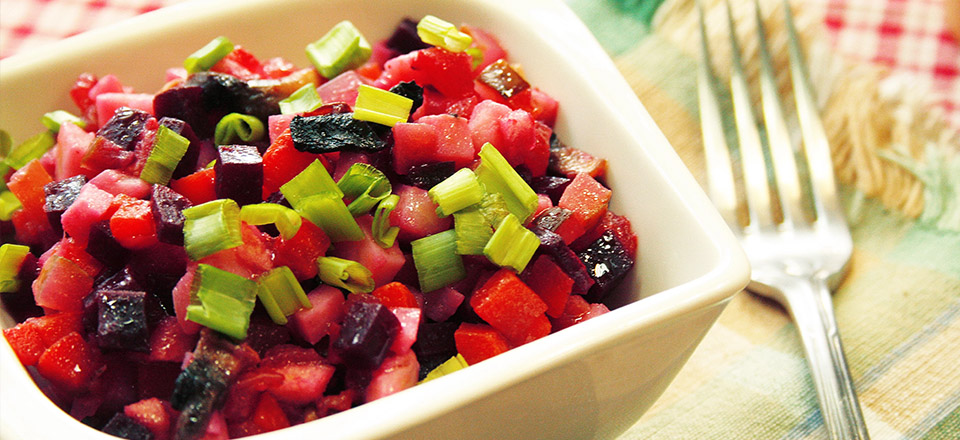
This salad appeared in Russian cuisine in the 19th century. It is made of boiled beets, potatoes, beans, carrots, pickles, and onions. The salad is dressed with sunflower oil.
Pickles
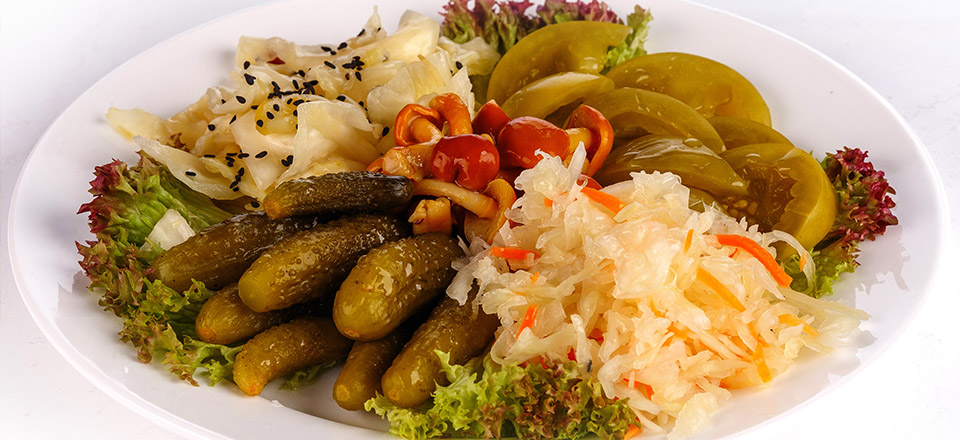
Traditionally, in every Russian family, after gathering the fall harvest, housewives did pickles for the coming winter. They pickled cucumbers, tomatoes, cabbage, and mushrooms. Russians always serve pickles when they have guests or celebrate some events.
Preserves
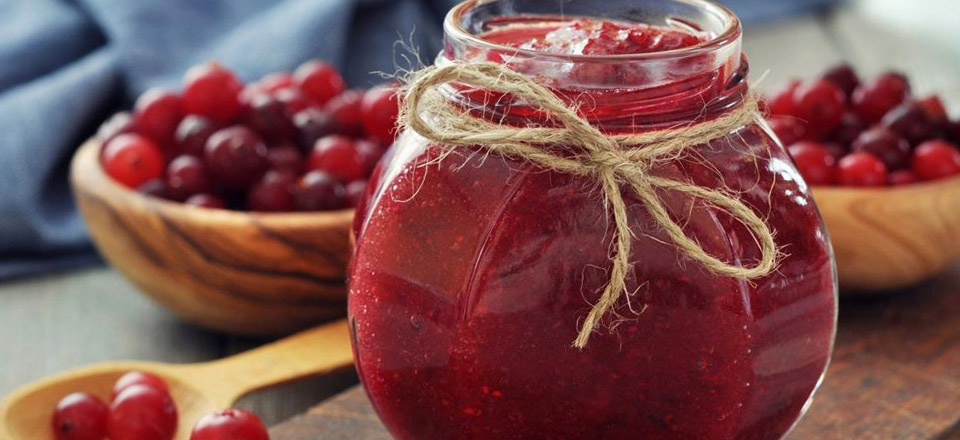
Preserves are a form of traditional home-made dessert in Russia. Preserves are often made from fruit and berries grown in one’s own garden plot, or picked in the forest. Every housewife might have her own recipe for making preserves, and recipes may vary depending on the housewife’s skills and preferences.
Jellied meat
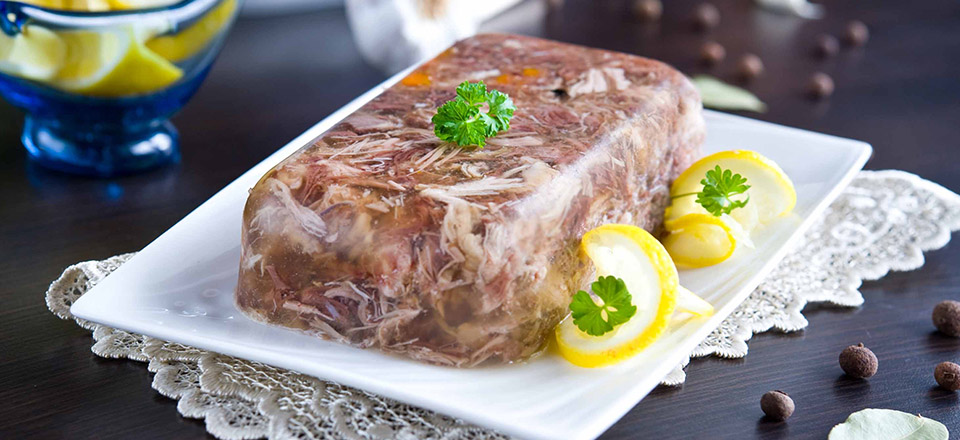
Jellied meat or aspic is probably the most unusual dish for any foreigner. It is a jelly from meat which is traditionally cooked from the remains of a pig – a pig’s head, ears, hooves, and tail. It is boiled for several hours, then the meat is cut. The broth and pieces of meat are put into bowls and are put to chill in the fridge. Aspic is served with hot seasonings, such as horseradish and mustard.
These are most popular dished of traditional Russian cuisine. We recommend to taste them!
You may be interested

Why do people speak Russian in Daugavpils?
As it seems to us, Daugavpils is the best place to learn Russian now, because our city is situated in the EU and NATO, but at the same time 90% of the city’s population speak Russian at home.

ЭТЮД О ДВИНСКЕ
Etude on Dvinsk by F.Fedorov
The Baltic region is one of the most catastrophe prone regions of the 2nd millennium, especially its second part; it is the centre of attraction of ‘geopolitical’ interests of the European world. Probably the most tragic fate has befallen to the eastern part of the present Latvia and its multi-titled town of Dinaburg – Dvinsk – Daugavpils. During its 730 years long history, the town went through five rather autonomous periods of development, five different lives (German, Polish, Russian, Latvian, Soviet), and at the beginning of the 1990s it entered into the 6th period.
The history of Dinaburg – Dvinsk – Daugavpils is the history of five attempts by the town to begin its life anew; and this is determined not only by the fact that the town was four times burned down and had to start life from scratch, but first and foremost because each of these periods was characterized by a total change of ethnos and the socio-cultural field.
The present article deals with the cultural space of the town in one of the most efficient periods of its development – from the 1860s till World War I.


